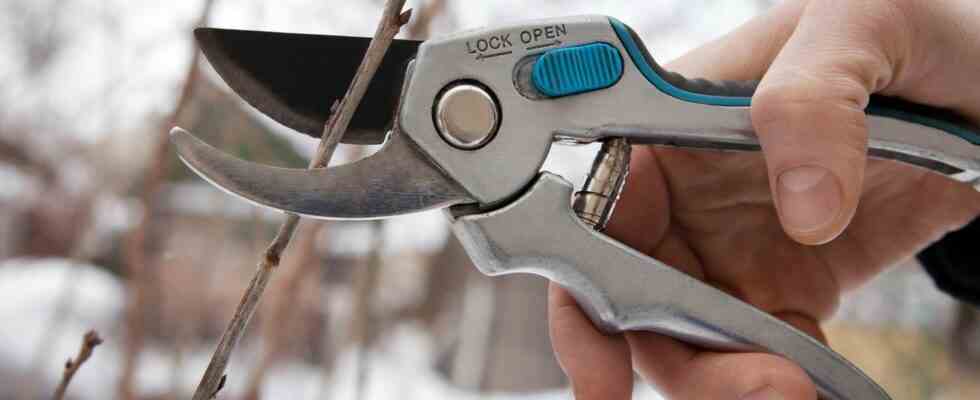Gardener Tips
Cut, feed, care: the 6 most important gardening tasks in January
January is one of the quieter months of the gardening year. Nevertheless, you can do something good for the allotment garden even in the cold season. Tips for gardening in January.
© Liubov Yashkir / Getty Images
January is one of the months in which allotment gardeners can sit back and relax without a guilty conscience. However, the garden cannot do without care. The six most important works in January.
Temperatures around or even below freezing are not good arguments for a trip to the allotment garden. Nevertheless, allotment gardeners should check their plot from time to time in January. And not only that. There are also some small (and important) jobs that should be done in the cold season. You can find out what these are and what you need for them in the following article.
Gardening in January: the most important things in brief
1. Cut off root suckers
In ornamental gardens in particular, you can and should start working in the first month of the year. Some shrubs develop magnificently even at low temperatures. For example, in the case of lilac, willow or sea buckthorn, root suckers tend to protrude from the earth. So that these shrubs do not multiply uncontrollably, they should be pruned with a garden spade (here is a model from Fiskars) must be cut off and disposed of properly.
2. Caring for strawberries
Strawberry plants are robust. Nevertheless, they also need some care in January. If possible, remove all diseased and dead leaves; especially from the plants planted in late summer. In addition, frost can push the root balls out of the ground. In this case, it should be carefully pushed back into the ground to protect the roots from the next frost.
Tip: Are you looking for gardening tools for the kids? With a MyToys voucher save up to 15 percent.
3. Cut pome fruit
Unlike other trees and shrubs, pome fruit can be cut at temperatures as low as -5 degrees Celsius (°C). Important: It should be dry so that no pathogens can penetrate the open cuts and damage the tree. For the same reason, be sure to use a sharp and clean blade to cut pome fruit secateurs.
4. Feed the birds
It may not be part of the classic garden work, but the native birds in particular have a hard time in winter. And when looking for berries, Meise & Co. only find what they are looking for in a few allotment gardens. That is exactly why you should help and for example bedding lay out or nutrient rich fat balls place in shrubs or trees.
5. Propagate gooseberries and currants
They are among the most popular types of fruit among allotment gardeners. And gooseberries and currants are already looking forward to their owners’ valued attention in January. Specifically, it is about multiplying the sweet berries. For this purpose, one-year-old rods are cut with sharp pruning shears (here is a model from WOLF-Garten) cut into pieces 20 to 30 centimeters long and put (without the leaves) in a pot filled with sandy soil.
6. Sow cold germs
Some ornamental plants love the cold. So-called cold germs such as monkshood or the popular Christmas rose can be sown in January without hesitation. The temperatures should be between 4 and -4 °C when sowing. In some cases, the seeds should be placed on the home windowsill in damp potting soil swell before being allowed outside.
You might also be interested in:
This article contains so-called affiliate links. Further information are available here.


